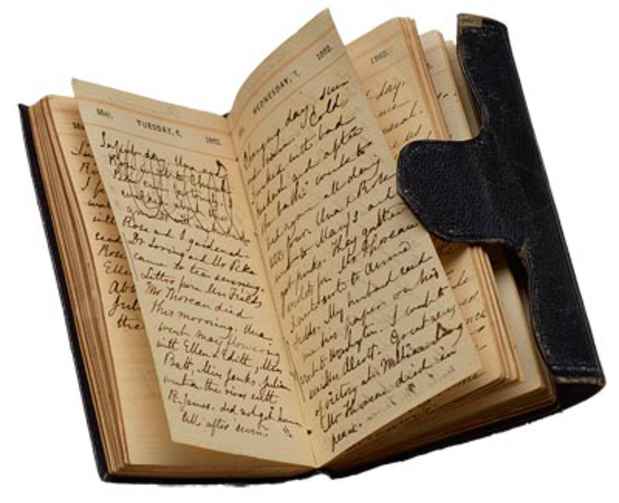"The Diary: Three Centuries of Private Lives" Exhibition
The Morgan Library & Museum

This event has ended.
Charlotte Brontë (1816–1855) relied on her diary to escape stifling work as a schoolteacher; Tennessee Williams (1911–1983) confided his loneliness and self-doubt; John Steinbeck (1902–1968) struggled to compose The Grapes of Wrath, and Bob Dylan (b. 1941) sketched his way through a concert tour.
For centuries, people have turned to private journals to document their days, sort out creative problems, help them through crises, comfort them in solitude or pain, or preserve their stories for the future. As more and more diarists turn away from the traditional notebook and seek a broader audience through web journals, blogs, and social media, this exhibition explores how and why we document our everyday lives.
With over seventy items on view, the exhibition raises questions about this pervasive practice: what is a diary? Must it be a private document? Who is the audience for the unfolding stories of our lives—ourselves alone, our families, or a wider group? The diaries on view allow us to observe, in personal terms, the birth of such great works of art as Nathaniel Hawthorne's novel The Scarlet Letter and Gilbert & Sullivan's opera The Pirates of Penzance. Momentous public events, from the Boston Tea Party to the 9/11 attacks on the World Trade Center, are marked by individual witnesses. Many diarists, such as Henry David Thoreau (1817–1862) and John Newton (1725–1807), former slave trafficker and author of the hymn "Amazing Grace," look inward, striving to live with integrity. Three great artists in their twenties, all on the brink of fame—Joshua Reynolds (1723–1792), Charlotte Brontë, and Kingsley Amis (1922–1995)—hone their considerable talents in their private writings. And century after century, many individuals—from the famous diarist Samuel Pepys (1633–1703) to Abstract Impressionist painter Charles Seliger (1926–2009)—capture memory and mark time by keeping a daily record of the substance of everyday life.
[Image: Sophia Peabody Hawthorne "Diary of Sophia Peabody Hawthorne (1809–1871)" (1862). Gift of Lorenz Reich, Jr., 1980]
Media
Schedule
from January 21, 2011 to May 22, 2011